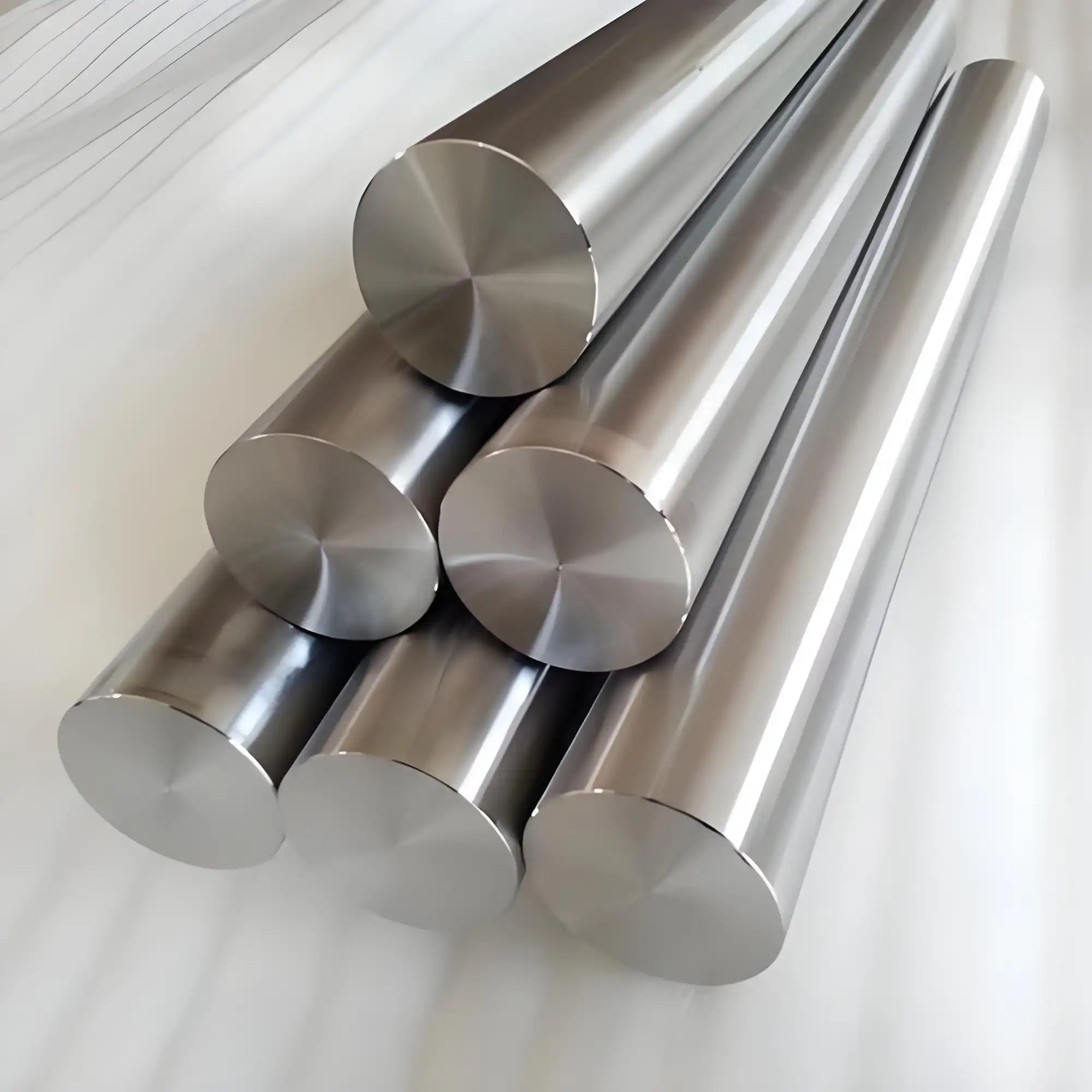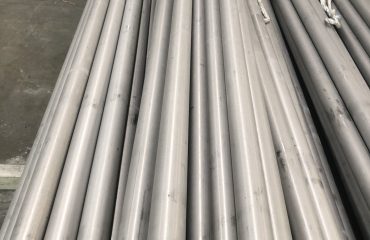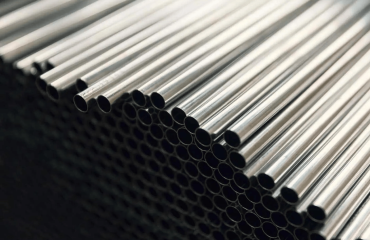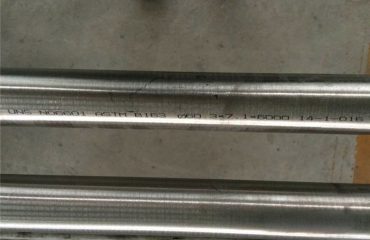
Nickel Alloy 718 (Inconel® 718, UNS N07718, W. Nr. 2.4668) Bar, Forged, Sheet, and Ring
Introduction to Inconel® 718
Inconel® 718 (UNS N07718, W. Nr. 2.4668), also known as Nickel Alloy 718, is a high-performance, precipitation-hardenable nickel-chromium superalloy renowned for its exceptional strength, corrosion resistance, and stability across a wide temperature range, from cryogenic conditions (-423°F/-253°C) to high temperatures (1300°F/704°C). Widely used in aerospace, oil and gas, and power generation, Inconel 718 is available in forms such as bars, forgings, sheets, and rings, each tailored for specific applications like turbine components, rocket motors, and high-pressure fittings. Its unique properties stem from a balanced composition featuring nickel, chromium, niobium, and molybdenum, which enable precipitation hardening and resistance to harsh environments.
The alloy’s versatility makes it ideal for complex parts requiring high tensile strength, fatigue resistance, and weldability. Inconel 718 bars are used for high-stress components like fasteners and shafts, forgings for turbine disks and rings, sheets for formed parts in engines, and rings for sealing and structural applications. Its corrosion resistance, particularly against stress-corrosion cracking (SCC) and pitting, ensures durability in aggressive media like sour gas and seawater. This article explores Inconel 718’s chemical composition, mechanical properties, manufacturing processes, applications, and dimensional tolerances for bars, forgings, sheets, and rings. Detailed tables provide a reference for engineers, and comparisons with Incoloy 901 and pipe piling grades (EN10219-1, API 5L) highlight its specialized role. By leveraging insights from industry standards and manufacturers, this article underscores Inconel 718’s critical importance in advanced engineering.
Chemical Composition and Material Analysis
The chemical composition of Inconel 718 is meticulously designed to deliver high strength, corrosion resistance, and weldability. The alloy typically contains 50.0–55.0% nickel, 17.0–21.0% chromium, 4.75–5.50% niobium, 2.8–3.3% molybdenum, 0.65–1.15% titanium, 0.2–0.8% aluminum, and a balance of iron (18–20%), with trace elements including carbon (≤0.08%), manganese (≤0.35%), silicon (≤0.35%), phosphorus (≤0.015%), sulfur (≤0.015%), and boron (≤0.006%). These elements are controlled to optimize the formation of γ’ [Ni3(Al, Ti)] and γ” [Ni3Nb] phases during heat treatment, which enhance strength through precipitation hardening.
Nickel provides the foundation for corrosion resistance and structural stability at high temperatures, while chromium forms a protective oxide layer, resisting oxidation up to 1800°F (982°C). Niobium and titanium drive precipitation hardening, significantly increasing yield strength, while molybdenum enhances resistance to pitting and crevice corrosion in chloride-rich environments. The low carbon content minimizes carbide precipitation, reducing sensitization during welding, and boron strengthens grain boundaries, improving creep resistance. Compared to Incoloy 901 (40–45% nickel, 2.35–3.10% titanium), Inconel 718’s higher niobium and nickel content boost its strength and corrosion resistance, though it increases manufacturing complexity. Relative to pipe piling grades like EN10219-1 S355JOH (0.22% carbon, 1.60% manganese), Inconel 718’s nickel-based composition offers superior performance in extreme conditions but at a higher cost.
The alloy’s microstructure remains stable across a wide temperature range, resisting phase transformations that could degrade performance. This makes Inconel 718 ideal for bars, forgings, sheets, and rings used in demanding applications, meeting standards like ASTM B637 for forgings and ASTM B670 for sheets.
Mechanical Properties of Inconel 718
Inconel 718 exhibits outstanding mechanical properties, making it suitable for high-stress applications across its various forms. At room temperature, the alloy offers a minimum yield strength of 1034–1035 MPa (150 ksi) and tensile strength of 1241–1275 MPa (180–185 ksi), with an elongation of 12–15% and hardness of approximately 331 HBW (35 HRC). These properties are maintained up to 1300°F (704°C), with a yield strength of around 860 MPa (125 ksi) at 1200°F (649°C), ensuring reliability in high-temperature environments like gas turbines. The alloy’s creep-rupture strength and fatigue resistance are critical for cyclic loading applications, such as turbine disks and rocket motor components.
Precipitation hardening, driven by γ’ and γ” phases, is achieved through heat treatments like solution annealing at 1700–1850°F (927–1010°C) followed by aging at 1325°F (718°C) for 8 hours, cooling at 100°F/hr to 1150°F (621°C), and holding for 8 hours (AMS 5662). This treatment maximizes tensile and fatigue strength, while an alternative treatment (AMS 5664) enhances transverse ductility in heavy sections at the cost of notch brittleness. Bars and forgings benefit from these treatments for aerospace components, while sheets and rings require similar processes to ensure formability and strength. Compared to Incoloy 901 (yield strength ~900 MPa), Inconel 718 offers superior strength, while pipe piling grades like API 5L X70 (485 N/mm²) are significantly weaker but more cost-effective for structural applications.
The alloy’s toughness allows for forging and rolling into complex shapes, with bars and rings often machined in the solution-annealed condition to account for size contraction (up to 0.07%) during aging. These properties ensure Inconel 718’s reliability in critical applications.
Corrosion Resistance Characteristics
Inconel 718’s corrosion resistance is a defining feature, enabling its use in aggressive environments across bars, forgings, sheets, and rings. The high nickel content (50–55%) provides resistance to a wide range of inorganic and organic compounds, except strongly oxidizing media, while chromium (17–21%) forms a protective oxide layer, resisting oxidation and scaling up to 1800°F (982°C). Molybdenum (2.8–3.3%) enhances pitting and crevice corrosion resistance in chloride-rich environments, such as seawater and sour gas wells, making the alloy suitable for oil and gas applications. The alloy also resists stress-corrosion cracking (SCC), critical for high-pressure systems.
Compared to Incoloy 901, Inconel 718 offers superior resistance to oxidizing acids and high-temperature corrosion due to its higher nickel and niobium content, though it is less resistant to scaling than stainless steels like Type 310 in extreme conditions. Pipe piling grades (e.g., EN10219-1 S355JOH, API 5L X52) rely on coatings for corrosion protection, lacking Inconel 718’s inherent resistance. The low carbon content minimizes sensitization during welding, reducing intergranular corrosion, which is vital for welded sheets and rings. In aerospace, the alloy withstands sulfur-containing jet engine atmospheres, while in marine settings, coatings or cathodic protection may extend service life.
The alloy’s corrosion resistance, combined with its mechanical properties, makes it ideal for applications requiring durability in harsh conditions, ensuring long-term performance in turbine components, fasteners, and cryogenic tankage.
Manufacturing and Processing
Manufacturing Inconel 718 into bars, forgings, sheets, and rings requires precise metallurgical and processing techniques to achieve optimal properties. The alloy is typically hot worked at 1850–2100°F (1010–1150°C) to ensure formability, with careful control to avoid sulfur-containing fuels that could embrittle the material. Bars and forgings are produced via vacuum induction melting (VIM) and vacuum arc remelting (VAR), followed by forging at 900–1120°C with uniform reductions (20% minimum for open-die, 10% for closed-die) to avoid duplex grain structures. Solution annealing at 955–1065°C, followed by aging at 720–650°C for 18–20 hours (AMS 5662/5664), optimizes strength and ductility.
Sheets are rolled in the solution-annealed condition to ensure formability, with ASTM B670 specifying tolerances for thickness and flatness. Rings are forged or rolled, often requiring nickel plating and vacuum brazing (e.g., BNi-2 filler metal) for aerospace components. Welding, critical for sheets and rings, uses gas tungsten arc welding (GTAW) or electron beam welding (EBW) with AWS A5.14 ERNiFeCr-2 filler to minimize hot cracking. The alloy’s high strength makes machining challenging (group D-2), requiring rough machining in the solution-annealed state and finishing after aging to account for size contraction (0.07%).
Compared to Incoloy 901, Inconel 718 is harder to forge due to its higher nickel content, but its weldability is superior to many superalloys. Pipe piling grades are easier to process but lack the high-temperature performance. These processes ensure Inconel 718 meets standards like ASTM B637 and AMS 5596, delivering reliability in critical applications.
Applications of Inconel 718
Inconel 718’s versatility across bars, forgings, sheets, and rings supports a wide range of applications in demanding industries. In aerospace, bars are used for high-temperature bolts, fasteners, and shafts, while forgings form turbine disks, compressor blades, and rocket motor components, leveraging the alloy’s strength and fatigue resistance. Sheets are formed into casings, exhaust systems, and airframe parts for jet engines, benefiting from their formability and corrosion resistance. Rings are critical for sealing and structural components in turbines and rocket motors, where high creep-rupture strength is essential.
In the oil and gas industry, Inconel 718 bars and forgings are used for wellbore tools, valves, and completion equipment, resisting sour gas and chloride corrosion. Sheets and rings are employed in high-pressure piping and fittings for offshore platforms. The alloy’s cryogenic performance supports applications in liquefied natural gas (LNG) tankage, while its high-temperature stability is valuable in power generation for steam turbine components. Nuclear reactors utilize Inconel 718 for its radiation resistance, and automotive applications include exhaust systems and turbocharger components.
Compared to pipe piling grades (e.g., API 5L X70), which are used for structural foundations, Inconel 718 is reserved for high-performance applications where cost is secondary to durability. Incoloy 901 is used in similar aerospace applications but is less suited for extreme corrosion environments. The alloy’s ability to be fabricated into complex shapes ensures its role in critical systems across industries.
Technical Specifications and Parameter Table
The following table summarizes the key parameters of Inconel 718 for bars, forgings, sheets, and rings, providing a comprehensive reference for engineers.
| Parameter | Specification |
|---|---|
| Alloy Designation | Inconel® 718 (UNS N07718, W. Nr. 2.4668) |
| Chemical Composition | Ni: 50.0–55.0%, Cr: 17.0–21.0%, Nb: 4.75–5.50%, Mo: 2.8–3.3%, Ti: 0.65–1.15%, Al: 0.2–0.8%, Fe: Balance, C: ≤0.08%, Mn: ≤0.35%, Si: ≤0.35%, P: ≤0.015%, S: ≤0.015%, B: ≤0.006% |
| Density | 8.19 g/cm³ (0.296 lb/in³) |
| Tensile Strength (Room Temp) | ≥1241–1275 MPa (180–185 ksi) |
| Yield Strength (Room Temp) | ≥1034–1035 MPa (150 ksi) |
| Elongation (Room Temp) | 12–15% |
| Hardness | ~331 HBW (35 HRC) |
| Creep Rupture Strength | High at 1300°F (704°C) |
| Corrosion Resistance | Excellent in oxidizing, chloride-rich, and sour gas environments |
| Oxidation Resistance | Up to 1800°F (982°C) |
| Hot Working Temperature | 1850–2100°F (1010–1150°C) |
| Heat Treatment (AMS 5662) | Solution anneal at 1700–1850°F (927–1010°C), age at 1325°F (718°C) for 8h, cool 100°F/hr to 1150°F (621°C), hold 8h, air cool |
| Weldability | Moderate, GTAW/EBW with AWS A5.14 ERNiFeCr-2 filler |
| Standards | ASTM B637 (forgings), ASTM B670 (sheet), AMS 5596, AMS 5662–5664 |
| Applications | Aerospace (turbine disks, fasteners), oil and gas (valves, wellbore tools), power generation, nuclear reactors |
This table provides a concise overview of Inconel 718’s properties, aiding in material selection for specific applications.
Dimensional Tolerances
Dimensional tolerances for Inconel 718 bars, forgings, sheets, and rings are critical for ensuring precision in manufacturing and application, governed by standards like ASTM B637 and ASTM B670. For bars, ASTM B637 specifies tolerances of ±0.010 inch (±0.25 mm) for diameters up to 1 inch (25.4 mm) and ±0.031 inch (±0.79 mm) for larger diameters (K9–K12, H8–H13). Hex and square bars have tolerances of ±0.020 inch (±0.51 mm) for sizes up to 2 inches (50.8 mm). Forgings, per AMS 5662–5664, maintain similar tolerances, with cross-sectional areas limited to 78 in² (503 cm²) for bars and finished forgings. Sheets, per ASTM B670, have thickness tolerances of ±0.005 inch (±0.13 mm) for thicknesses ≤0.125 inch (3.18 mm) and ±10% for thicker sections.
Rings, often forged or rolled, adhere to ASTM B637 tolerances, with outer diameter tolerances of ±0.020 inch (±0.51 mm) for diameters up to 10 inches (254 mm). Straightness for bars is limited to 0.050 inch per foot (4.17 mm/m), ensuring alignment during machining. Compared to pipe piling grades (EN10219-2: ±1% diameter, ±10% thickness), Inconel 718’s tolerances are tighter due to its precision applications. Surface finishes, such as polished or pickled for bars and bright or mirror for sheets, are controlled to meet aerospace standards. These tolerances ensure Inconel 718 components meet the stringent requirements of high-performance systems, minimizing defects and ensuring reliability.
Comparison with Incoloy 901 and Pipe Piling Grades
Inconel 718 is often compared to Incoloy 901 and pipe piling grades due to their overlapping applications. Incoloy 901 (UNS N09901), with a yield strength of ~900 MPa and tensile strength of 1150 MPa, is less robust than Inconel 718 (1034–1035 MPa yield, 1241–1275 MPa tensile). Inconel 718’s higher nickel (50–55% vs. 40–45%) and niobium (4.75–5.50%) content enhance its strength and corrosion resistance, particularly in oxidizing acids and high-temperature environments. Incoloy 901’s higher iron content improves forgeability, making it easier to process, but it is less resistant to extreme corrosion compared to Inconel 718.
Pipe piling grades like EN10219-1 S355JOH (yield strength 355 N/mm²) and API 5L X52 (360 N/mm²) are designed for structural applications, with carbon contents up to 0.26% and manganese up to 1.65%. These grades are far less expensive but lack Inconel 718’s high-temperature and corrosion resistance, relying on coatings for durability. Inconel 718 is used in specialized applications like turbine components and sour gas wells, while pipe piling grades are suited for foundations and marine structures. The choice depends on environmental and performance requirements, with Inconel 718 offering unmatched durability for extreme conditions at a premium cost.
Inconel 718’s superior properties make it ideal for aerospace and oil and gas, while Incoloy 901 and pipe piling grades serve as cost-effective alternatives for less demanding applications.
Challenges and Limitations
Inconel 718’s exceptional properties come with challenges that require careful consideration. Weldability is a significant hurdle, as the alloy’s high nickel and niobium content increases susceptibility to hot cracking. Techniques like GTAW or EBW with AWS A5.14 ERNiFeCr-2 filler, performed in the solution-annealed condition, are necessary to minimize cracking, followed by post-weld heat treatment. This complexity exceeds that of Incoloy 901, which is easier to weld due to its higher iron content. Machining is another challenge (group D-2), requiring rough machining in the solution-annealed state and finishing after aging to account for size contraction (0.07%).
The alloy’s high cost, driven by nickel and niobium, limits its use to applications where performance justifies the expense. Pipe piling grades like API 5L X70 are more economical for structural applications but cannot match Inconel 718’s corrosion resistance or high-temperature performance. Above 1300°F (704°C), Inconel 718’s strength declines, necessitating alloys like Inconel 625 for higher temperatures. Corrosion resistance is excellent but less effective in strongly oxidizing acids compared to Inconel 625. Protective coatings or cathodic protection may be needed in marine environments to extend service life.
These challenges are mitigated through precise manufacturing, proper heat treatments, and environmental assessments, ensuring Inconel 718 delivers reliable performance in critical applications like aerospace and oil and gas.




You must be logged in to post a comment.